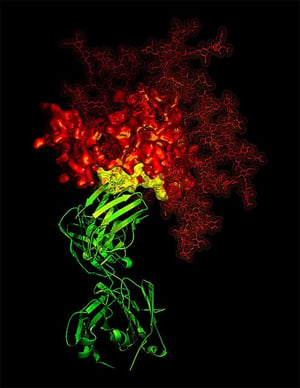 Recombinant production of proteins involves transfecting cells with desired gene in a DNA vector. The gene then translates into a protein using host cellular machinery. These expressed proteins can then be extracted by lysing the cells ans subsequent purification steps. Both Prokaryotic and Eukaryotic expression systems are widely used . Each system has its own advantages and disadvantages. A particular expression system is chosen depending on economic and qualitative aspects, such as the type of protein, function and desired protein yield.
Recombinant production of proteins involves transfecting cells with desired gene in a DNA vector. The gene then translates into a protein using host cellular machinery. These expressed proteins can then be extracted by lysing the cells ans subsequent purification steps. Both Prokaryotic and Eukaryotic expression systems are widely used . Each system has its own advantages and disadvantages. A particular expression system is chosen depending on economic and qualitative aspects, such as the type of protein, function and desired protein yield.
Bacterial, Yeast, Insect and Mammalian expression systems are widely used. In recent times researchers are also using cell free expression systems.
Bacterial expression system
Offer large scale production of recombinant protein in a short time (doubling time of E.coli is 20 minutes). It requires simple culture conditions (media, additives), which are scalable and it incurs low cost. Disadvantages of this system include difficulty in expressing some mammalian proteins, accumulation of proteins as inclusion bodies, protease contamination from host proteins leading to degradation of expressed protein, and also endotoxin accumulation. e.g. Escherichia coli, Bacillus subtilis.
Yeast expression system
A well defined, economic eukaryotic expression system. It combines the advantages of both prokaryotic and eukaryotic expression systems. This system is used to express secretary as well as intracellular proteins. This system offers high protein yield, lesser expression time, post translational modifications and requires simple media. This system can be optimized for high level protein expression (grams) using fermentors. Drawbacks include hyperglycosylation of proteins, unlike mammalian system, it offers both N and O linked oligosaccharides on proteins and fermentation is necessary for high protein yield. e.g. Pichia pastoris, Saccharomyces cerevisiae.
Insect cell expression system
The most used technique to express mammalian proteins, which require post translational modifications. In this system, Baculovirus vectors are used to insert desired gene and transfected into cultured insect cells, such as from Spodoptera fugiperda. This system is most similar to mammalian expression systems. It can be used both in adherent and suspension cultures. Purification process is easy and baculoviruses are safe to work with compared to mammalian viruses. Drawbacks include time consuming cloning procedure of desired gene in baculovirus vector and require very expensive media and glycosylation is different from that of mammalian system resulting in improper maintenance of epitopes on protein. e.g. Sf9 cells.
Mammalian expression system
An ideal choice for the production of therapeutic proteins and vaccines. In this expression system, plasmid based vectors as well as viral based vectors (adenoviral vector, vaccinia vector) are used to transfect desired gene into cultured mammalian cells. In this method proteins can be expressed by both transient and stable cell cultures. This system offers desired post translational modifications and proper protein folding. Main drawback of this method is high cost of protein production, because of slow cell growth, expensive media and culture conditions (continuous CO2 supply, expensive transfection reagents). High protein yield can be obtained only by suspension cultures. e.g. Chinese Hamster Ovarian (CHO) cells, Human Embryonic Kidney (HEK 293) cells.
Cell free expression system
An alternative in vitro protein expression system. Unlike those mentioned above, here the protein is expressed in a cell free environment using cell extract, DNA template, amino acids and cofactors. It is a simple process, protein expression and purification can be done in a short period of time (1-2 days). Labeling of proteins for structural studies like NMR, X-ray crystallography with labelled unnatural amino acids (Se-Met), heavy isotopes (C13, N15) can be done easily. Drawbacks include degradation of protein by exogenous proteases from cell extracts and the extracts are expensive. e.g. Rabbit reticulocyte expression system, Wheat germ.
Depending on the purpose, one can use expression system of their choice. For antigen production, structural studies, activity studies, where post translational modifications are not required prokaryotic expression system can be used. For production of vaccines and therapeutics and proteins that require post translational modifications for their biological activity mammalian expression system can be used.
References:
1. Rosano GL, Ceccarelli EA. Recombinant protein expression in Escherichia coli: advances and challenges. Frontiers in Microbiology. 2014;5:172. doi:10.3389/fmicb. 2014.00172.






